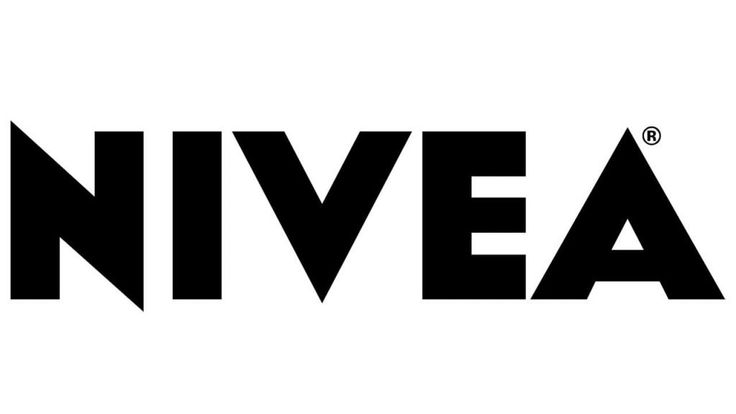
**Rolex** is a luxury Swiss watchmaker renowned for its high-quality craftsmanship, precision, and timeless design. Founded in 1905 by Hans Wilsdorf and Alfred Davis in London, the company initially operated under the name Wilsdorf & Davis. In 1908, Wilsdorf registered the trademark “Rolex” and later moved the company headquarters to Geneva, Switzerland, in 1919, where it remains today.
### Key Aspects of Rolex
1. **Innovative Milestones:**
– **First Chronometer Certification for a Wristwatch:** In 1910, Rolex became the first wristwatch to receive the Swiss Certificate of Chronometric Precision, a key milestone in establishing its reputation for accuracy.
– **Oyster Case (1926):** Rolex invented the world’s first waterproof wristwatch, the Rolex Oyster. The Oyster case became a defining feature of Rolex watches, characterized by its hermetically sealed case, protecting the movement from water and dust.
– **Perpetual Movement (1931):** Rolex introduced the first self-winding movement with a Perpetual rotor, which became a standard in automatic watches, enhancing convenience and reliability.
2. **Iconic Models:**
– **Rolex Submariner:** Introduced in 1953, the Submariner is a legendary dive watch known for its durability, water resistance (up to 300 meters), and robust design. It remains one of the most popular Rolex models.
– **Rolex Daytona:** Launched in 1963, the Daytona is a chronograph watch specifically designed for racing drivers, featuring a tachymeter scale on the bezel to measure speed.
– **Rolex Datejust:** Released in 1945, the Datejust was the first automatic wristwatch to display the date on the dial. Its elegant design and versatility have made it a timeless classic.
– **Rolex GMT-Master:** Initially developed in 1954 for airline pilots, the GMT-Master features a 24-hour rotating bezel and an additional hour hand to display a second time zone.
3. **Materials and Craftsmanship:**
– Rolex is known for its meticulous craftsmanship, using only the highest quality materials such as 18-karat gold, 950 platinum, and Oystersteel (a special alloy of stainless steel). The company is also known for creating its own gold alloys and developing proprietary materials like Cerachrom (ceramic) bezels and Everose gold.
4. **Brand Prestige and Recognition:**
– Rolex is considered one of the most prestigious and recognizable luxury brands globally. It is often associated with success, adventure, and timeless style. The brand’s association with explorers, athletes, and cultural icons has further cemented its status in popular culture.
5. **Commitment to Excellence and Innovation:**
– Rolex continually invests in research and development, maintaining its commitment to precision and reliability. Every Rolex watch undergoes rigorous testing, ensuring it meets the brand’s high standards before reaching the market.
6. **Rolex and Philanthropy:**
– The Hans Wilsdorf Foundation, which owns Rolex, is a private charitable organization that supports various causes, including education and entrepreneurship. Profits from the company’s operations contribute to the foundation’s philanthropic activities.
### Today
Rolex continues to lead the luxury watch market with its combination of heritage, innovation, and unmatched quality. It remains a symbol of status, excellence, and timeless style, admired by watch enthusiasts, collectors, and professionals worldwide.

The journey of **Rolex** is one of innovation, excellence, and a relentless pursuit of perfection, transforming it from a small watchmaking company to one of the most prestigious luxury watch brands in the world. Here’s a detailed overview of Rolex’s remarkable evolution:
### Founding and Early Years (1905-1920)
– **1905:** Rolex was founded by Hans Wilsdorf and his brother-in-law Alfred Davis in London, originally named Wilsdorf & Davis. They began by importing Swiss watch movements to England and placing them in high-quality watch cases.
– **1908:** Wilsdorf registered the trademark “Rolex” and officially changed the company’s name. The name was chosen because it was short, easy to pronounce in any language, and looked good on watch dials.
– **1910:** Rolex became the first wristwatch to receive the Swiss Certificate of Chronometric Precision from the Official Watch Rating Centre in Bienne, Switzerland, marking the beginning of Rolex’s reputation for accuracy and precision.
### Relocation and Innovations (1920-1945)
– **1919:** Due to World War I’s economic impact and taxes on luxury items in the UK, Rolex moved its headquarters to Geneva, Switzerland, a hub of watchmaking excellence.
– **1926: The Oyster Case:** Rolex introduced the world’s first waterproof and dustproof wristwatch, the “Oyster,” featuring a hermetically sealed case that protected the movement from external elements. To prove its durability, Rolex equipped swimmer Mercedes Gleitze with an Oyster during her swim across the English Channel in 1927. The watch remained fully functional afterward, garnering worldwide attention.
– **1931: Perpetual Movement:** Rolex invented the first self-winding mechanism with a perpetual rotor, which used wrist motion to wind the watch, creating a standard for automatic watches and enhancing their reliability and convenience.
### Post-War Expansion and Iconic Models (1945-1980)
– **1945: Datejust:** Rolex introduced the Datejust, the first wristwatch to automatically change the date on the dial. It was fitted with a distinctive fluted bezel and a Jubilee bracelet, quickly becoming a symbol of timeless elegance.
– **1953: The Submariner and Explorer:** Rolex launched the Submariner, the first dive watch water-resistant to 100 meters, designed for professional divers and underwater explorers. The same year, the Rolex Explorer was released to celebrate the first successful ascent of Mount Everest by Sir Edmund Hillary and Tenzing Norgay, showcasing its durability in extreme conditions.
– **1955: The GMT-Master:** Developed in collaboration with Pan American Airways (Pan Am) for their pilots, the GMT-Master allowed wearers to track two time zones simultaneously, making it a favorite among aviators and travelers.
– **1963: The Cosmograph Daytona:** Designed for race car drivers, the Daytona featured a chronograph function and a tachymeter scale on the bezel to measure average speeds, eventually becoming one of the most iconic and sought-after Rolex models.
### Technological Advancements and Continued Growth (1980-2000)
– **1970s-1980s:** Amid the Quartz Crisis, where many traditional watchmakers were threatened by inexpensive quartz watches, Rolex focused on its strengths—precision, quality, and heritage—while also introducing its own quartz models, like the Oysterquartz, to cater to market demands.
– **1985:** Rolex began using 904L stainless steel, known as Oystersteel, for its watches. This alloy is highly resistant to corrosion and has a unique luster, further enhancing the durability and luxury of Rolex timepieces.
### Modern Era and Continued Innovation (2000-Present)
– **2000:** Rolex introduced the in-house Caliber 4130 movement for the Cosmograph Daytona, marking a significant milestone in its movement production capabilities. This period also saw Rolex enhance its production facilities and vertically integrate its manufacturing processes to maintain strict quality control.
– **2005: Cerachrom Bezels:** Rolex introduced Cerachrom bezels, a proprietary ceramic material that is highly resistant to scratches, fading, and corrosion, further enhancing the durability of its sports models.
– **2007: Rolex Deepsea:** Rolex launched the Deepsea, a professional diver’s watch designed to withstand the extreme pressures of deep-sea exploration, with water resistance up to 3,900 meters.
– **2012: Rolex Sky-Dweller:** Rolex introduced the Sky-Dweller, a sophisticated watch featuring an annual calendar and dual time zone display, showcasing the brand’s innovative prowess.
### Philanthropy and Cultural Impact
– **Hans Wilsdorf Foundation:** After the passing of Hans Wilsdorf in 1960, ownership of Rolex transferred to the Hans Wilsdorf Foundation, a private trust that supports charitable causes, including education, entrepreneurship, and the arts.
– **Rolex Awards and Sponsorships:** Rolex has established itself as a patron of the arts, science, and exploration through initiatives like the Rolex Awards for Enterprise, supporting pioneering individuals in various fields. The company is also a major sponsor of prestigious sporting events, including tennis, golf, yachting, and equestrianism.
### Current Standing
Today, Rolex remains one of the most prestigious and recognized luxury watch brands globally. It continues to be synonymous with quality, precision, and timeless style. The company is still privately owned by the Hans Wilsdorf Foundation, and all profits go towards charity and reinvestment in the company, maintaining its independence and commitment to excellence.
### Legacy and Reputation
Rolex’s journey has been characterized by innovation, precision, and a commitment to excellence. Its pioneering spirit, coupled with a legacy of quality and reliability, has made Rolex not just a watch brand but a cultural icon, representing success, adventure, and timeless style.






